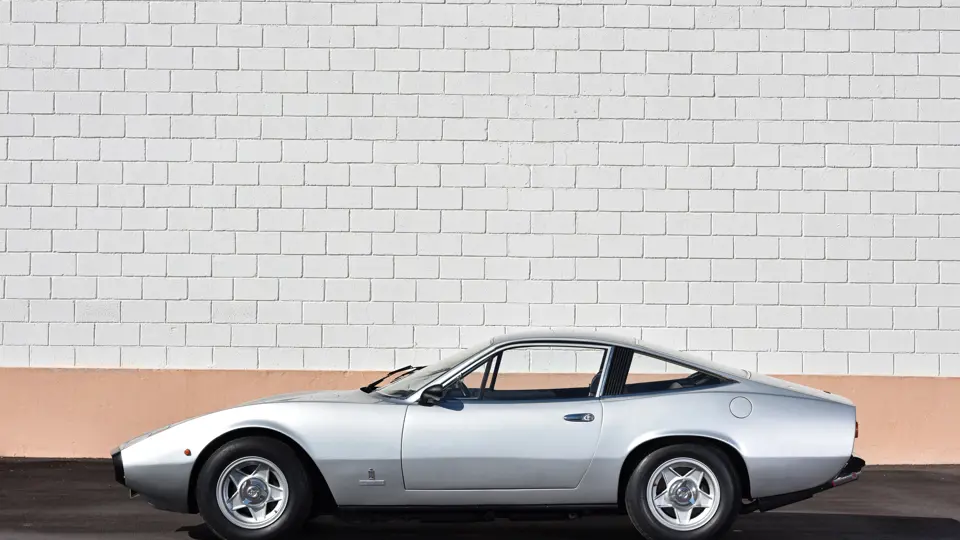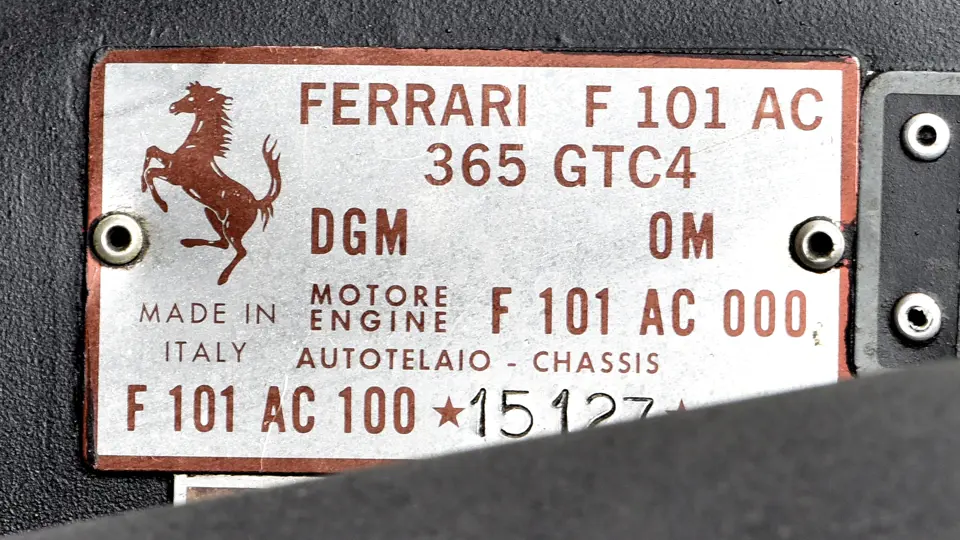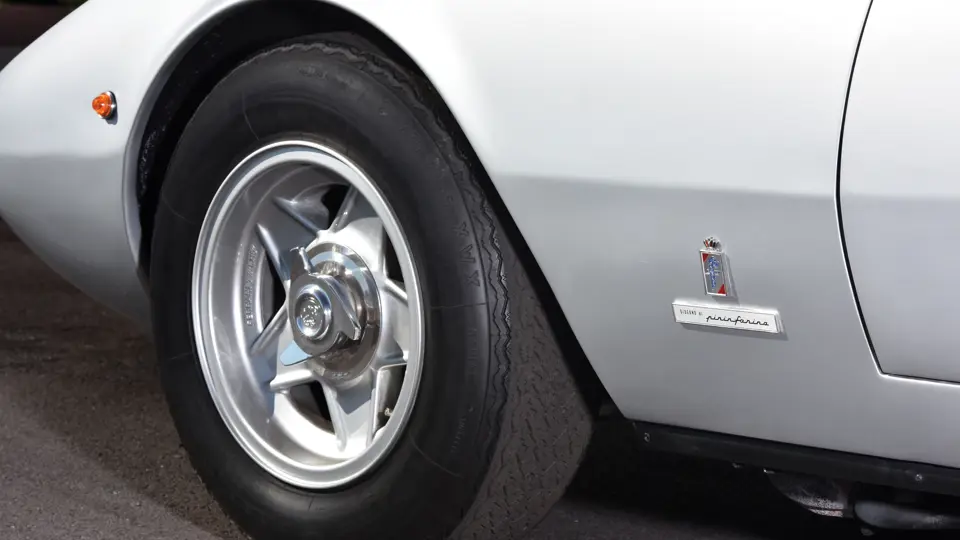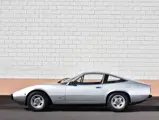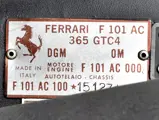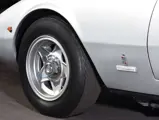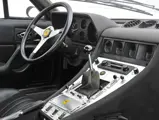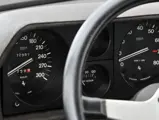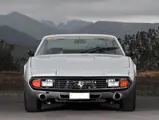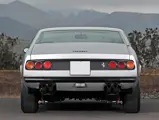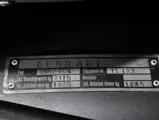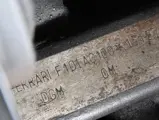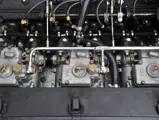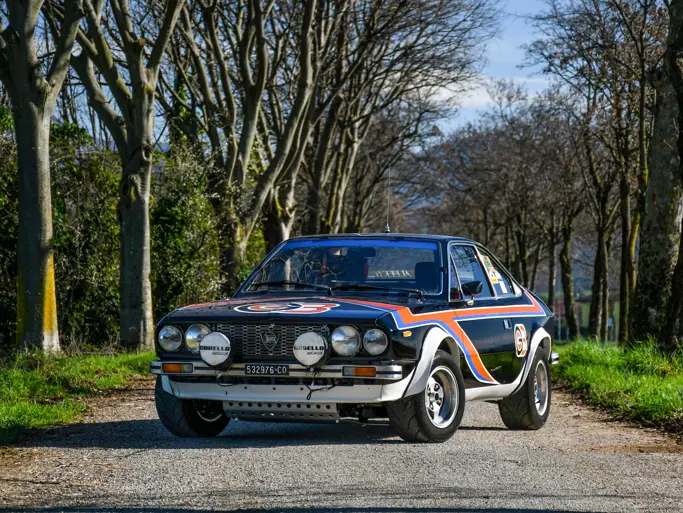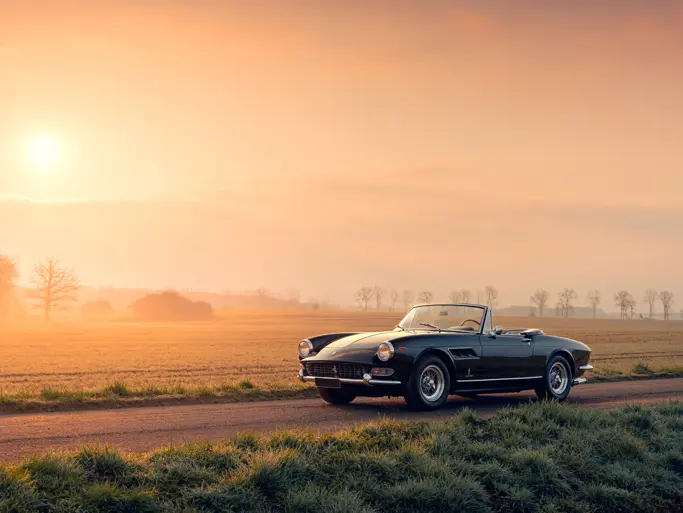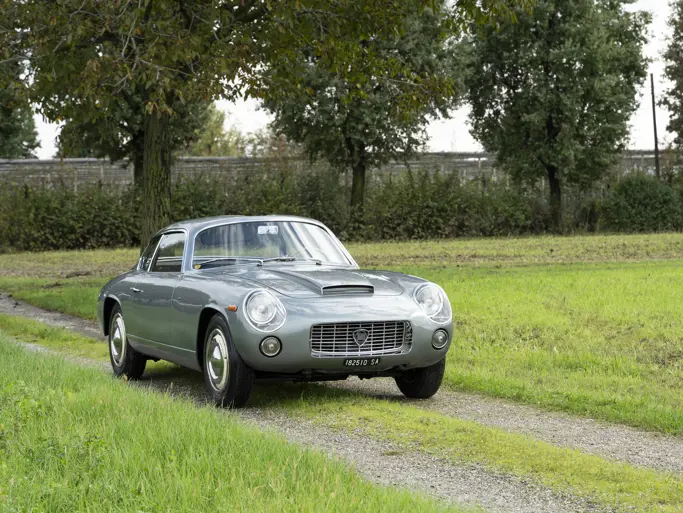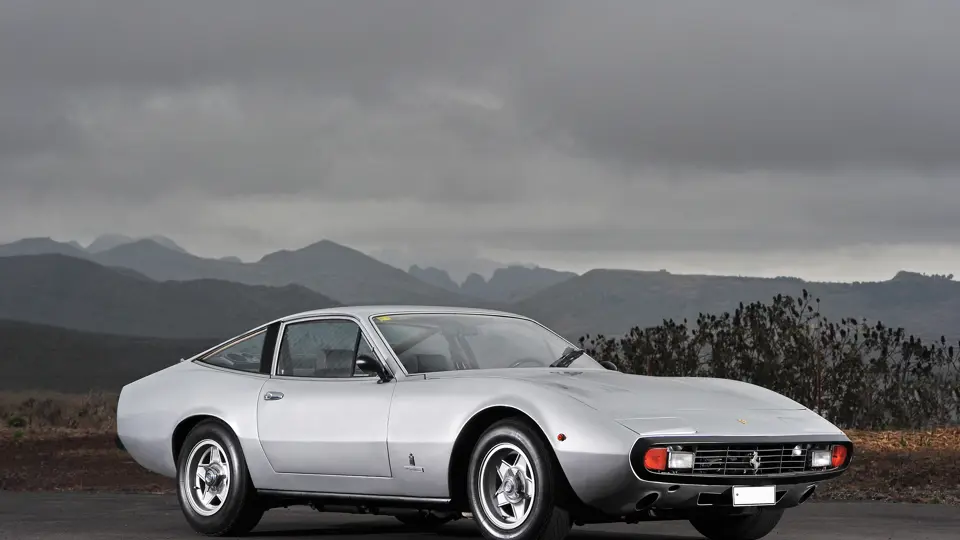
1972 Ferrari 365 GTC/4 by Pininfarina
{{lr.item.text}}
€224,000 EUR | Sold
{{bidding.lot.reserveStatusFormatted}}
- One of just 500 examples built
- Four-cam engine based on the P2 and P3 sports cars
- Classic Pininfarina styling with 2+2 seating
- Seulement 500 exemplaires produits
- Moteur quatre ACT dérivé de celui des P2 et P3 de compétition
- Style Pininfarina classique, avec carrosserie 2+2
340 hp, 4,390 cc DOHC V-12 engine with six Weber 38 DCOE5 side-draft carburettors, five-speed manual transmission, front and rear independent suspension with double wishbones, coil springs, an anti-roll bar, and telescopic dampers, and four-wheel power-assisted disc brakes. Wheelbase: 2,500 mm.
Moteur V-12, 4 390 cm3, 340 ch, deux ACT par banc, six carburateurs Weber 38 DCOE5 horizontaux, boîte manuelle à cinq rapports, suspension avant et arrière indépendante par doubles triangles, ressorts hélicoïdaux, amortisseurs télescopiques et barres antiroulis, freins à disques sur les quatre roues. Empattement: 2 500 mm
The powerful 365 GTC/4 made its debut at the 1971 Geneva Motor Show as a 2+2 coupé with traditional Ferrari grand touring car features. The GTC/4 was considered a further development of the famed Daytona Berlinetta and GTC, as it had a slightly longer cabin that had room for two additional passengers, although most owners simply flipped the rear seatback down to gain additional luggage space. The cleanly styled 365 GTC/4 benefitted from Pininfarina’s new wind tunnel. Its tubular steel tubing chassis, which had been lengthened by 100 millimetres, required completely new steel body panels, which offered a sleek and wholly modern look.
The nose featured a new oval grille within a black bumper ring, and the retractable quadruple headlamps rose by electrical command. Two large intakes were positioned on the bonnet to aid in cooling the hand-built, 340-horsepower, 4.4-litre V-12 engine. Ferrari engineers redesigned the engine to fit below the new lower bonnet line. There were new cylinder heads, whose design was borrowed from the brilliant 330 P2 and 330 P3 sports racers; their intakes were now placed between the dual camshaft towers on each bank; and the Weber carburetion changed to side-drafts rather than the traditional downdrafts seen on the Daytona. A relocation of the carburettors also created room for the new anti-pollution oddments required for the U.S. market.
The lubrication system was changed to a wet-sump, and there was a hydro-pneumatic self-levelling device on the rear suspension, as well as ZF power-assisted recirculating-ball steering, power brakes, and a functional air-conditioning system. These features gave the GTC/4 much improved drivability over the Daytona. The interior was trimmed in the finest Italian leathers, and for his $27,500 outlay, a buyer had the choice of either Borrani wire wheels or Cromodora “throwing star” alloy rims. With its five-speed, fully synchronised transmission, the 4.4-litre 365 GTC/4 was capable of a 15.7-second standing quarter-mile at 91 mph, and top speeds could comfortably approach 160 mph.
The 365 GTC/4 Registry shows this example to be the 162nd of just 500 constructed in Modena during an 18-month span. Copies of the German registration document show that the car was first registered on 21 March 1973. The car was then owned by Margot Detzel, who had the Ferrari registered in her name on 6 August 1980. The following year, this car was offered for sale by Toni Erker, of Erkelenz, Germany. At that time, it was described as being painted red with black leather. The consignor acquired it from ER Sportwagen, of Bad Breisig, in August 1981, and then, in March 1982, after an extensive mechanical overhaul in Italy, it was shipped to the Canary Islands, where the car was road-registered in the consignor’s name in 1985. Today, it appears in Argento Auteuil, its original colour, with a plush Nero leather interior, and its odometer shows 32,987 kilometres. More recently, it was ITV certified on 21 October 2014.
The owner notes that the Ferrari is exceptionally well tuned and continues to drive smoothly, with immediate response. Perhaps Road & Track magazine summed up the 365 GTC/4 best when declaring it “a fine car for a cross-country trip in any weather…Less mechanical thrash comes through from the engine room than in any previous Ferrari, and the controls are smoother and lighter than ever, making the car deliciously easy to drive well”.
La puissante 365 GTC/4, un coupé 2+2 traditionnel offrant tous les attributs d'une Ferrari de Grand Tourisme, a été dévoilée en 1971 au Salon de Genève. Dérivée des fameuses berlinettes Daytona et GTC, la GTC/4 présentait un habitacle légèrement plus long qui pouvait accueillir deux passagers supplémentaires. La plupart des utilisateurs préféraient toutefois simplement rabattre le dossier arrière pour disposer de plus d'espace pour les bagages. Le style sobre de la 365 GTC/4 bénéficiait du passage dans la soufflerie de Pininfarina et sa structure en acier tubulaire, rallongée de 10 cm, imposait des panneaux de carrosserie complètement nouveaux qui offraient une allure élancée et moderne.
On trouvait à l'avant une calandre ovale entourée d'une lame de pare-chocs en caoutchouc, et les quatre phares escamotables étaient commandés électriquement. Le capot recevait deux grosses prises d'air qui participaient au refroidissement du moteur V-12 de 4,4 litres développant 340 ch. Les ingénieurs Ferrari l'avaient modifié pour qu'il trouve place sous la ligne de capot plus basse. Il comportait de nouvelles culasses extrapolées de celles des brillantes 330 P2 and 330 P3 de compétition, et l'admission s'effectuait désormais entre les arbre à cames par des carburateurs Weber horizontaux et non plus inversés comme sur la Daytona. La modification des carburateurs permettait aussi de répondre aux exigences de la règlementation américaine antipollution.
Le système de lubrification était modifié, avec un carter humide, et la suspension arrière recevait un dispositif hydropneumatique de correction d'assiette. La voiture comportait en outre une direction ZF assistée à billes, des freins assistés et un système d'air conditionné. Ces caractéristiques rendaient la GTC/4 beaucoup plus facile à utiliser que la Daytona. La sellerie présentait les cuirs italiens les plus raffinés et, pour sa voiture à 27 500 $, l'acheteur pouvait choisir entre un jeu de jantes Borrani à rayons, ou des jantes alliage Cromodora « en étoile ». Avec sa boîte cinq rapports entièrement synchronisés, la 365 GTC/4 couvrait le 400 m départ arrêté en 15,7 secondes avec vitesse finale de 146 km/h et elle frôlait 260 km/h en pointe.
Selon le 365 GTC/4 Registry, cet exemplaire est le 162e des 500 qui sont sortis des ateliers de Modène pendant les 18 mois de production, et des copies des documents d'immatriculation allemands montrent qu'il a été immatriculé pour la première fois le 21 mars 1973. La voiture est ensuite passée entre les mains de Margot Detzel qui l'immatriculait à son nom le 6 août 1980 et, l'année suivante, elle était proposée à la vente par Toni Erker, d'Erkelenz, en Allemagne. A cette époque, il la décrivait comme étant de teinte rouge, avec intérieur en cuir noir. L'actuel propriétaire en a fait l'acquisition en août 1981 auprès d'ER Sportwagen, de Bad Breisig et, après une révision mécanique complète en Italie, il a envoyé la voiture en mars 1982 sur les îles Canaries, puis l'a immatriculée en 1985 à son nom. Aujourd'hui, cette Ferrari 365 GTC/4 est Argento Auteuil, sa teinte d'origine, avec une luxueuse sellerie en cuir Nero, et son compteur affiche 32 987 km. Elle a récemment passé le contrôle technique espagnol (ITV), le 21 octobre 2014.
Son propriétaire précise que cette Ferrari est exceptionnellement bien réglée et qu'elle fonctionne avec souplesse et réactivité. Le magazine Road & Track a magnifiquement résumé la 365 GTC/4 en la décrivant comme « une excellente voiture pour partir en voyage à travers le pays, par tous les temps...Les bruits mécaniques venant du compartiment moteur sont plus discrets que sur n'importe quelle Ferrari précédente et les commandes sont plus douces et plus légères que jamais, ce qui rend cette voiture extrêmement facile à conduire correctement ».
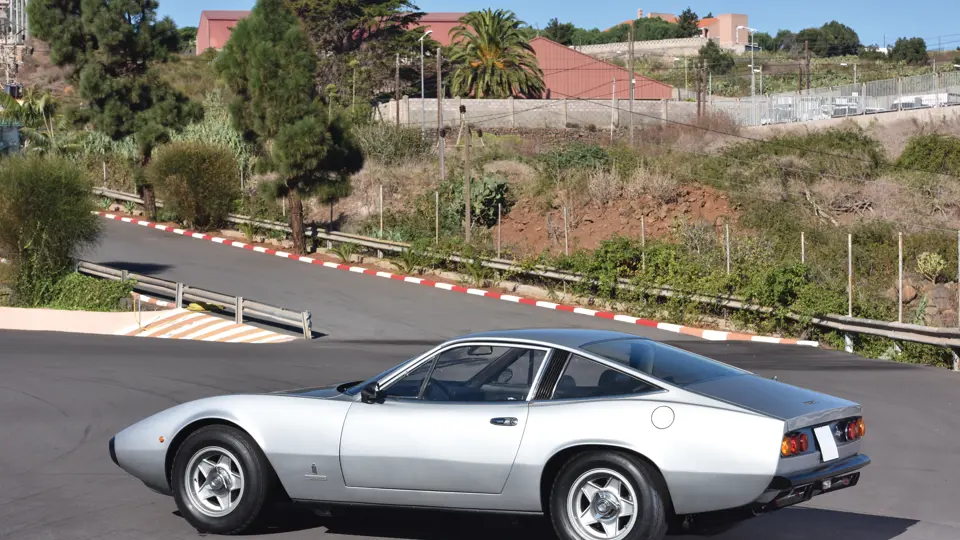
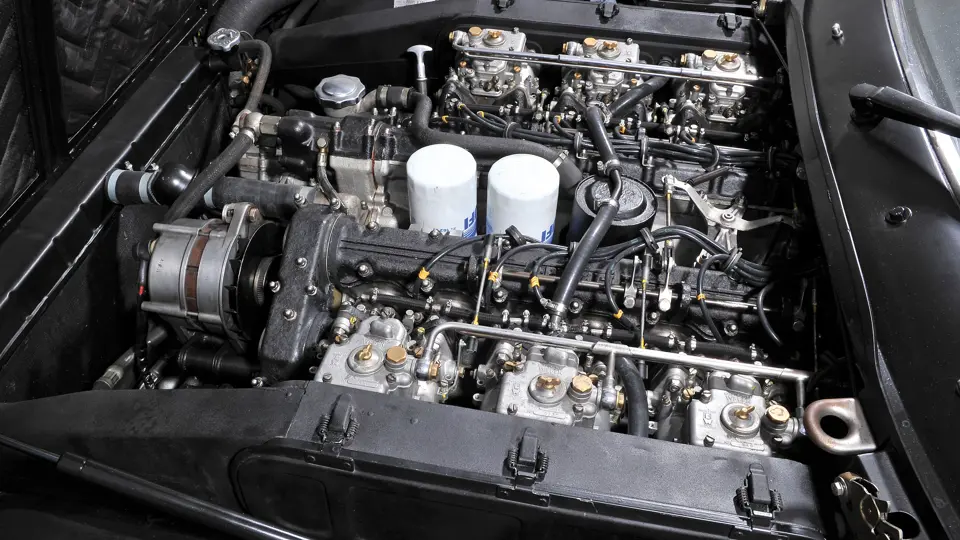


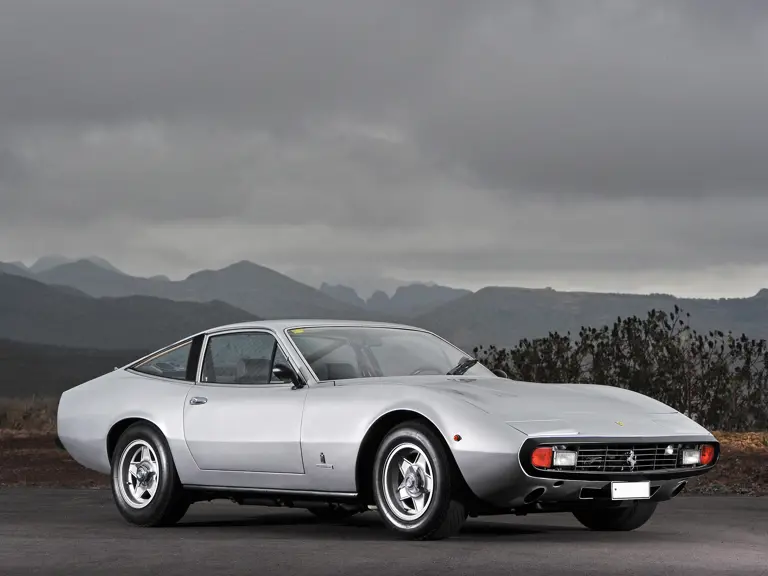
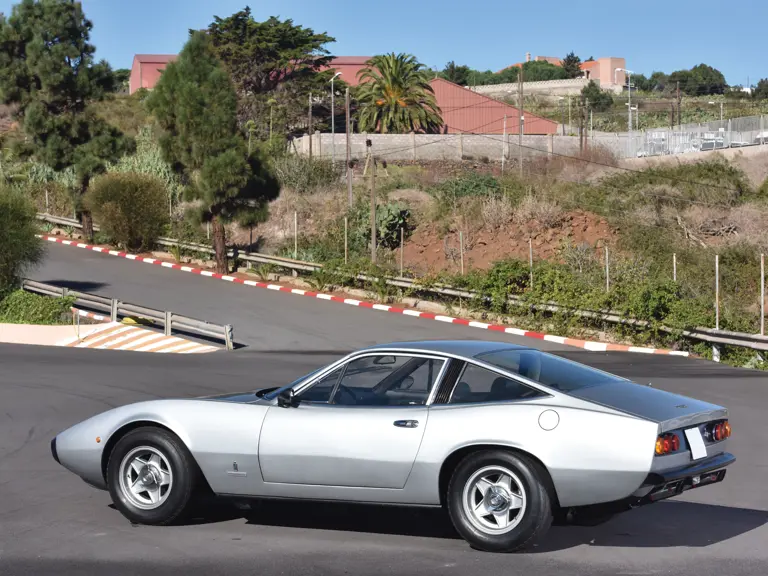

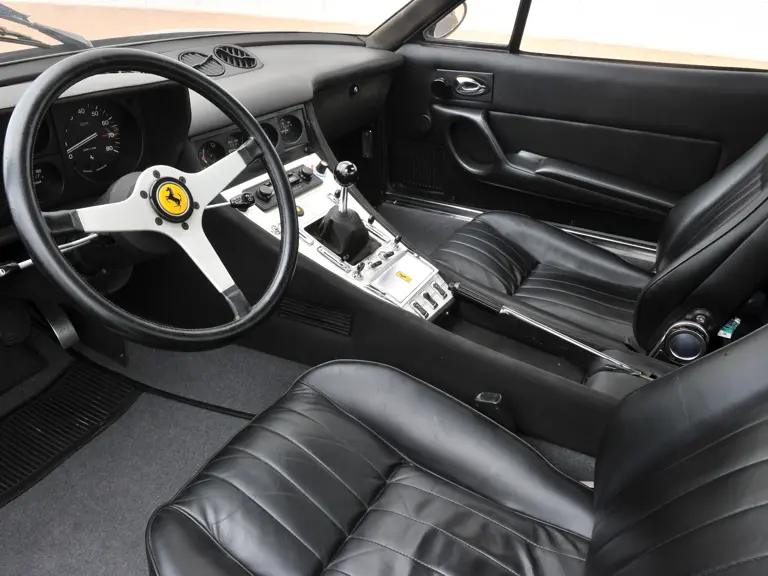
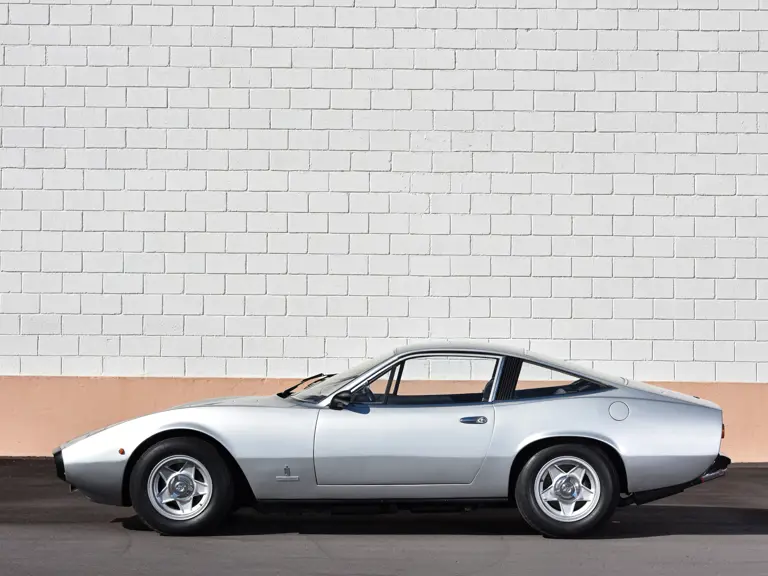
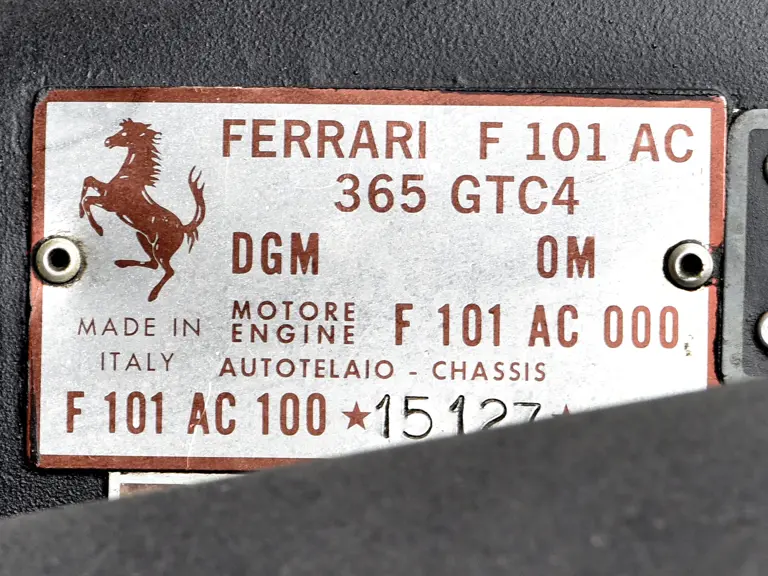
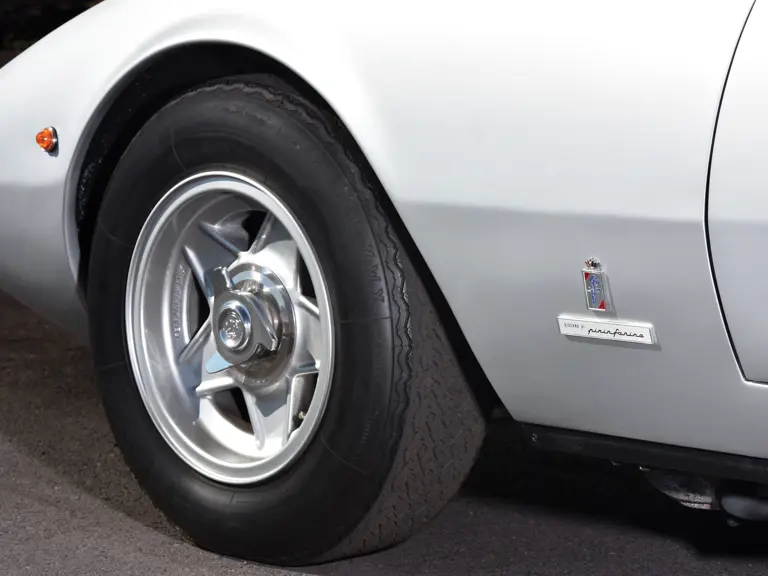
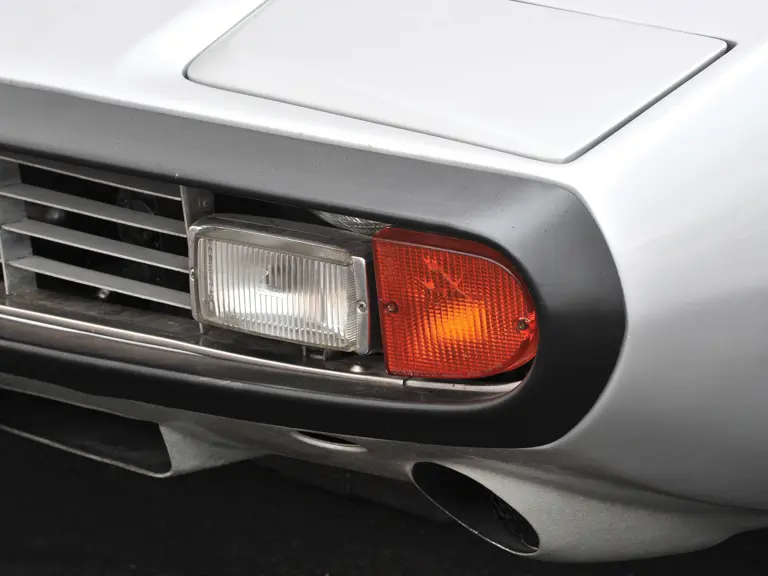
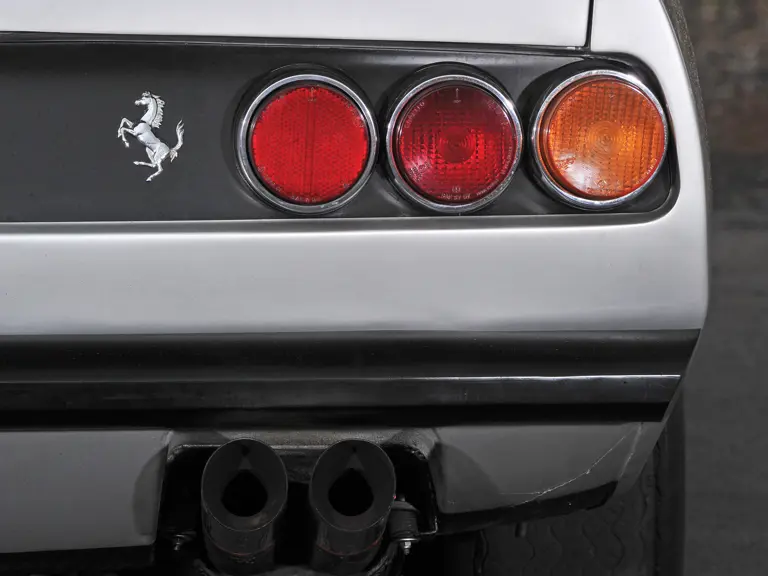


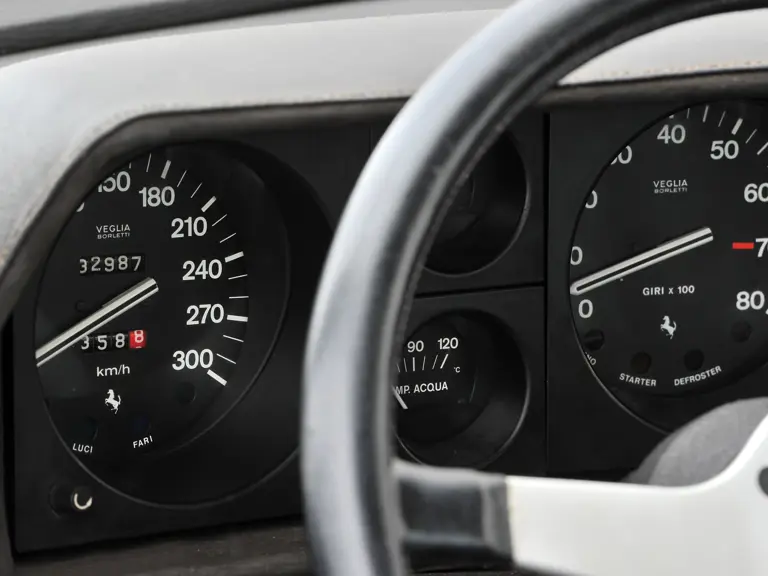
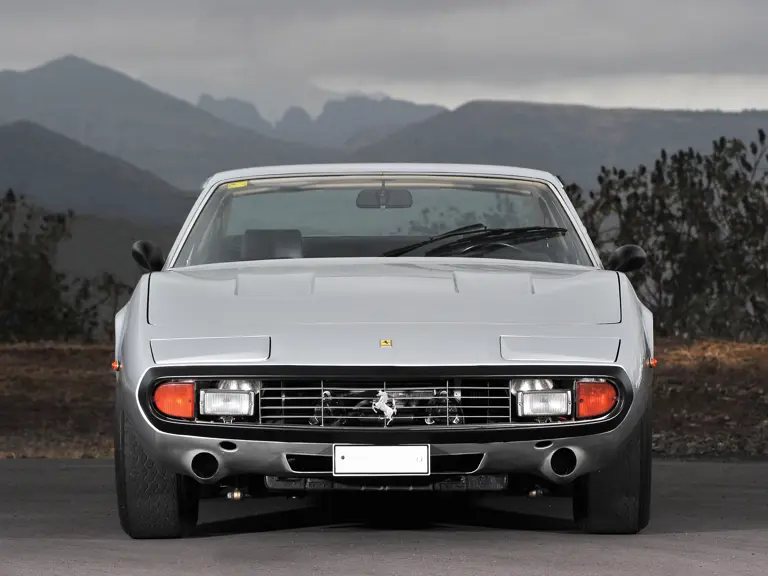
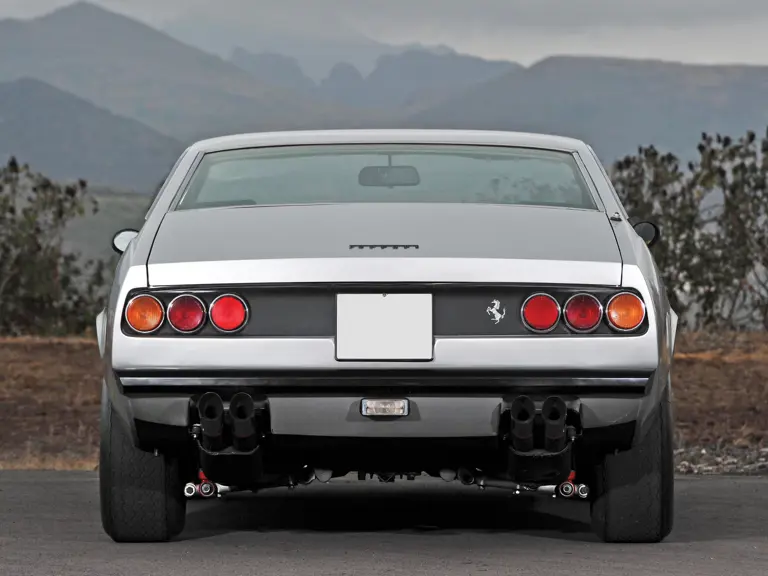


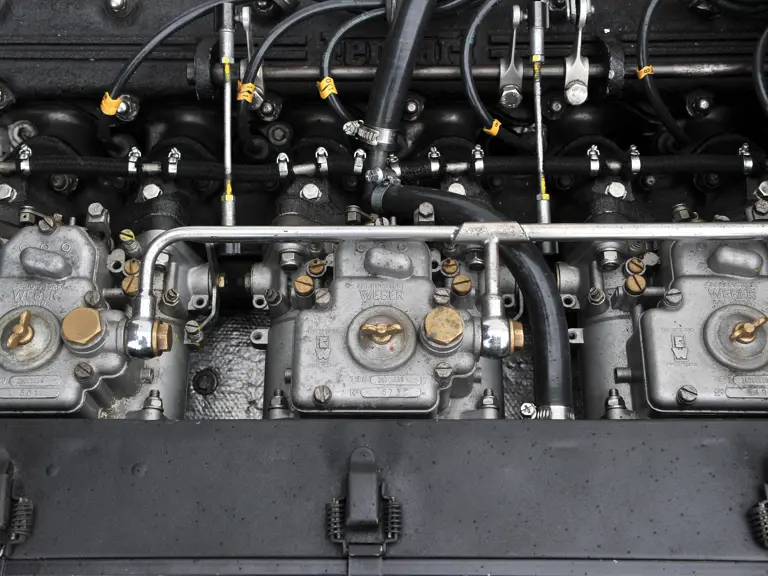
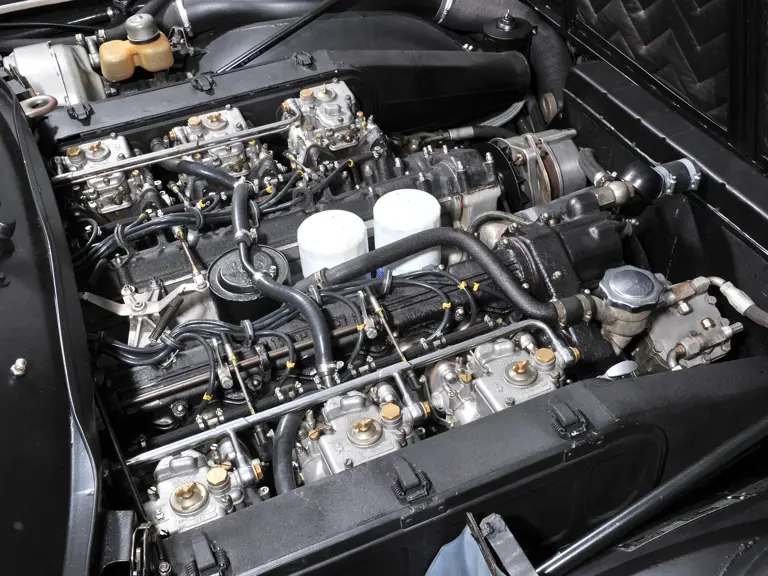
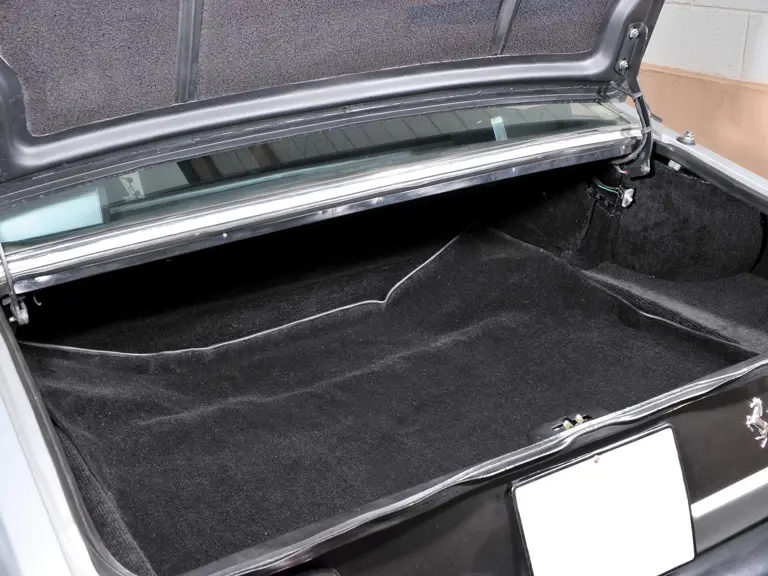
 | Paris, France
| Paris, France
